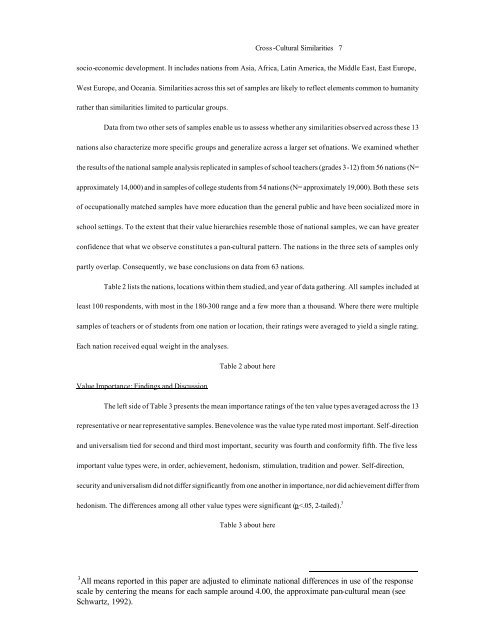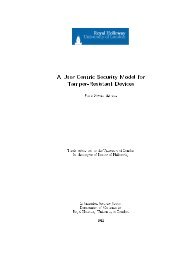Value Hierarchies across Cultures.rtf
Value Hierarchies across Cultures.rtf
Value Hierarchies across Cultures.rtf
- No tags were found...
Create successful ePaper yourself
Turn your PDF publications into a flip-book with our unique Google optimized e-Paper software.
Cross-Cultural Similarities 7socio-economic development. It includes nations from Asia, Africa, Latin America, the Middle East, East Europe,West Europe, and Oceania. Similarities <strong>across</strong> this set of samples are likely to reflect elements common to humanityrather than similarities limited to particular groups.Data from two other sets of samples enable us to assess whether any similarities observed <strong>across</strong> these 13nations also characterize more specific groups and generalize <strong>across</strong> a larger set of nations. We examined whetherthe results of the national sample analysis replicated in samples of school teachers (grades 3-12) from 56 nations (N=approximately 14,000) and in samples of college students from 54 nations (N= approximately 19,000). Both these setsof occupationally matched samples have more education than the general public and have been socialized more inschool settings. To the extent that their value hierarchies resemble those of national samples, we can have greaterconfidence that what we observe constitutes a pan-cultural pattern. The nations in the three sets of samples onlypartly overlap. Consequently, we base conclusions on data from 63 nations.Table 2 lists the nations, locations within them studied, and year of data gathering. All samples included atleast 100 respondents, with most in the 180-300 range and a few more than a thousand. Where there were multiplesamples of teachers or of students from one nation or location, their ratings were averaged to yield a single rating.Each nation received equal weight in the analyses.Table 2 about here<strong>Value</strong> Importance: Findings and DiscussionThe left side of Table 3 presents the mean importance ratings of the ten value types averaged <strong>across</strong> the 13representative or near representative samples. Benevolence was the value type rated most important. Self-directionand universalism tied for second and third most important, security was fourth and conformity fifth. The five lessimportant value types were, in order, achievement, hedonism, stimulation, tradition and power. Self-direction,security and universalism did not differ significantly from one another in importance, nor did achievement differ fromhedonism. The differences among all other value types were significant (p















